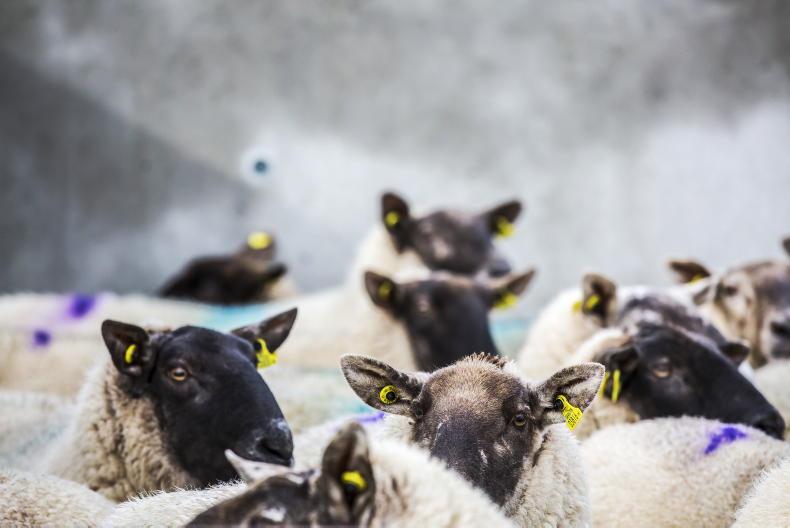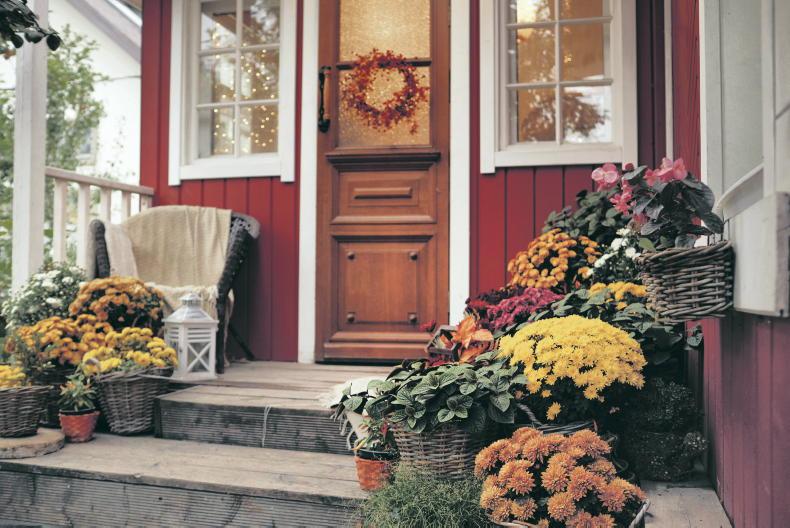Renowned biologist and environmentalist Éanna Ní Lamhna fondly recalls many childhood memories climbing trees in the beautiful Louth countryside. And she is encouraging children to discover the magic of trees by planting a sapling on 3 October for SPAR National Tree Day.
The Tree Council of Ireland, in partnership with SPAR, is asking primary schools across Ireland to connect with nature and plant a sapling as part of the campaign themed, ‘Trees are Magic - Draíocht na gCrann’. Over 2,000 native Irish hawthorn trees are being distributed free to schools via treeday.ie.
“I was one of seven kids, and when we came home from school, my mother would say ‘go out and play’ and ‘don’t come home unless you’re bleeding’, and so we went out to play, and one of the big things we did was climb trees,” says Éanna, who is the publicity officer for the Tree Council of Ireland.
“Some trees were better than others to climb. Elder trees were terrible because they would break. Willow was good too – but you’d climb up and then you couldn’t get down” she says, laughing.
“You’d be shouting, ‘I can’t get down’, and someone would be down below telling you to put your foot here and put your foot there and ‘don’t ever climb up that tree again’, which of course we did the following day. We had great fun climbing trees and I was always very good at it.”
Tree magic
That early grá for trees has grown over the years, and she is now one of Ireland’s best known and loved environmental advocates. A writer and broadcaster, Éanna is keen to promote the importance of trees in our environment to the next generation.
“A tree is a wonderful microcosm of a whole biodiversity of our environment,” she comments, saying they are good for the soil, for fungi, for holding water to stop flooding, acting as shelter belts and supporting a whole range of wildlife.
There is a great “curiosity” about looking at trees, finding what type it is, and examining the leaves, berries, and fruit. “The right tree in the right place is what you want,” she stresses though.
This year’s theme focuses on the magic of trees which is most appropriate, according to Éanna. Why? Because when you think about it, an acorn is planted, and 20 years later you come back to a great big tree that grew out of the air.

Get planting is the message for schools from writer and broadcaster Éanna Ní Lamhna this Spar National Tree Day on 3 October.
“Trees are made of air. They are not made of soil,” Éanna explains. “It’s actually the carbon in the atmosphere that’s taken in by the leaves in photosynthesis and stored in the trunk.
"You get this big solid thing (the tree) say 20 years or whatever time later, that has been created from the air by taking in the carbon. So, in that sense, they are magic; photosynthesis is magic. It’s the only way we can get the carbon dioxide out of the air.”
The other aspect of National Tree Day is the focus on our native hawthorn tree, which has a special place in Irish folklore and is believed to have mystical qualities.
Many people will know the hawthorn or whitethorn as the ‘fairy tree’ where fairies, known as Sidhe, gather. Its distinctive white flowers and vibrant red berries are an eye-catching feature of woodlands and hedgerows in the countryside during summer and autumn.
“They (fairies) come out from underneath the raths and things at Halloween and dance around the hawthorn, so if you cut down your hawthorn, you bring the wrath of the fairies upon you.
“This is why the hawthorn is imbued with this magic. It is actually a special area where the fairy folk come out at night, dance, and have meetings, and generally you don’t want to be upsetting them.”
So, in that sense, they are magic; photosynthesis is magic. It’s the only way we can get the carbon dioxide out of the air
Now running for 30 years, if schools have been planting their free tree every year, the environmentalist says they will have a “little arboretum of native trees.”
If it is the first year, it is the beginning of a new woodland and an opportunity to learn about the hawthorn, a native deciduous tree.
“It flowers in the month of May, which is why it is called the May bush or the whitethorn, and this is really important for bees because they are full of pollen and nectar that they want.
“Later on, in the summer, when pollination has happened, we get the berries called haws, and these are fruit for the birds, so it supports a lot of biodiversity, not to speak of the various creepy crawlies feeding on the leaves.”
Acknowledging a growing recognition of the importance of native Irish trees, Éanna is happy to see farmers planting them as part of the ACRES scheme as shelter belts for their animals and to increase biodiversity, keep down pests and create wildlife corridors.
Long ago it was about getting rid of hedgerows to make the fields bigger, but she says this is beginning to turn, and farmers are now allowed to plant up to a hectare of trees without any planting permission. Many are doing so and are proud of their efforts.
For more information visit treeday.ie
Renowned biologist and environmentalist Éanna Ní Lamhna fondly recalls many childhood memories climbing trees in the beautiful Louth countryside. And she is encouraging children to discover the magic of trees by planting a sapling on 3 October for SPAR National Tree Day.
The Tree Council of Ireland, in partnership with SPAR, is asking primary schools across Ireland to connect with nature and plant a sapling as part of the campaign themed, ‘Trees are Magic - Draíocht na gCrann’. Over 2,000 native Irish hawthorn trees are being distributed free to schools via treeday.ie.
“I was one of seven kids, and when we came home from school, my mother would say ‘go out and play’ and ‘don’t come home unless you’re bleeding’, and so we went out to play, and one of the big things we did was climb trees,” says Éanna, who is the publicity officer for the Tree Council of Ireland.
“Some trees were better than others to climb. Elder trees were terrible because they would break. Willow was good too – but you’d climb up and then you couldn’t get down” she says, laughing.
“You’d be shouting, ‘I can’t get down’, and someone would be down below telling you to put your foot here and put your foot there and ‘don’t ever climb up that tree again’, which of course we did the following day. We had great fun climbing trees and I was always very good at it.”
Tree magic
That early grá for trees has grown over the years, and she is now one of Ireland’s best known and loved environmental advocates. A writer and broadcaster, Éanna is keen to promote the importance of trees in our environment to the next generation.
“A tree is a wonderful microcosm of a whole biodiversity of our environment,” she comments, saying they are good for the soil, for fungi, for holding water to stop flooding, acting as shelter belts and supporting a whole range of wildlife.
There is a great “curiosity” about looking at trees, finding what type it is, and examining the leaves, berries, and fruit. “The right tree in the right place is what you want,” she stresses though.
This year’s theme focuses on the magic of trees which is most appropriate, according to Éanna. Why? Because when you think about it, an acorn is planted, and 20 years later you come back to a great big tree that grew out of the air.

Get planting is the message for schools from writer and broadcaster Éanna Ní Lamhna this Spar National Tree Day on 3 October.
“Trees are made of air. They are not made of soil,” Éanna explains. “It’s actually the carbon in the atmosphere that’s taken in by the leaves in photosynthesis and stored in the trunk.
"You get this big solid thing (the tree) say 20 years or whatever time later, that has been created from the air by taking in the carbon. So, in that sense, they are magic; photosynthesis is magic. It’s the only way we can get the carbon dioxide out of the air.”
The other aspect of National Tree Day is the focus on our native hawthorn tree, which has a special place in Irish folklore and is believed to have mystical qualities.
Many people will know the hawthorn or whitethorn as the ‘fairy tree’ where fairies, known as Sidhe, gather. Its distinctive white flowers and vibrant red berries are an eye-catching feature of woodlands and hedgerows in the countryside during summer and autumn.
“They (fairies) come out from underneath the raths and things at Halloween and dance around the hawthorn, so if you cut down your hawthorn, you bring the wrath of the fairies upon you.
“This is why the hawthorn is imbued with this magic. It is actually a special area where the fairy folk come out at night, dance, and have meetings, and generally you don’t want to be upsetting them.”
So, in that sense, they are magic; photosynthesis is magic. It’s the only way we can get the carbon dioxide out of the air
Now running for 30 years, if schools have been planting their free tree every year, the environmentalist says they will have a “little arboretum of native trees.”
If it is the first year, it is the beginning of a new woodland and an opportunity to learn about the hawthorn, a native deciduous tree.
“It flowers in the month of May, which is why it is called the May bush or the whitethorn, and this is really important for bees because they are full of pollen and nectar that they want.
“Later on, in the summer, when pollination has happened, we get the berries called haws, and these are fruit for the birds, so it supports a lot of biodiversity, not to speak of the various creepy crawlies feeding on the leaves.”
Acknowledging a growing recognition of the importance of native Irish trees, Éanna is happy to see farmers planting them as part of the ACRES scheme as shelter belts for their animals and to increase biodiversity, keep down pests and create wildlife corridors.
Long ago it was about getting rid of hedgerows to make the fields bigger, but she says this is beginning to turn, and farmers are now allowed to plant up to a hectare of trees without any planting permission. Many are doing so and are proud of their efforts.
For more information visit treeday.ie










SHARING OPTIONS